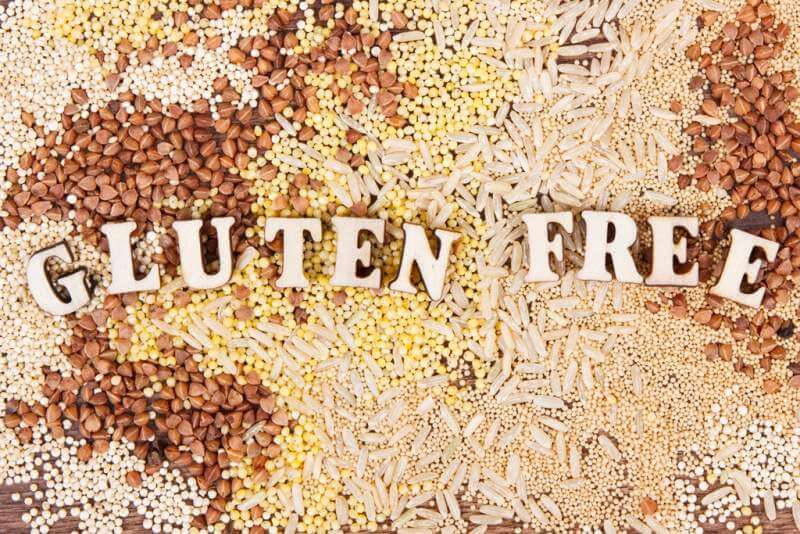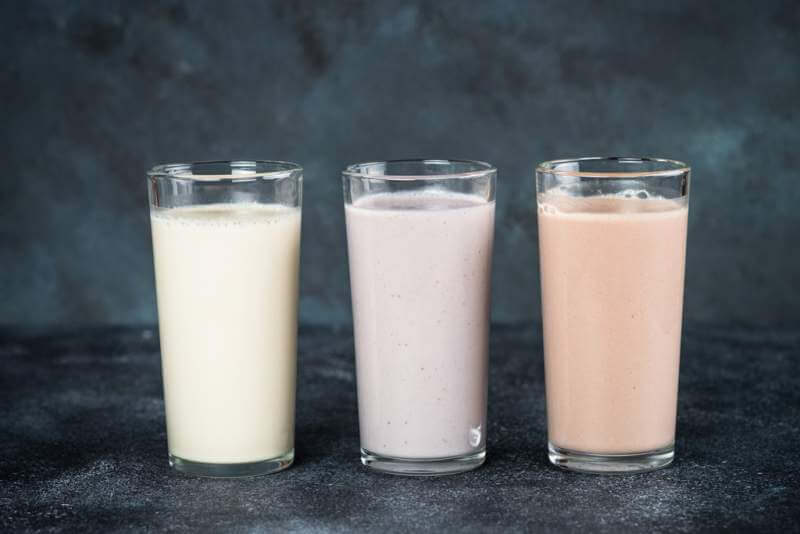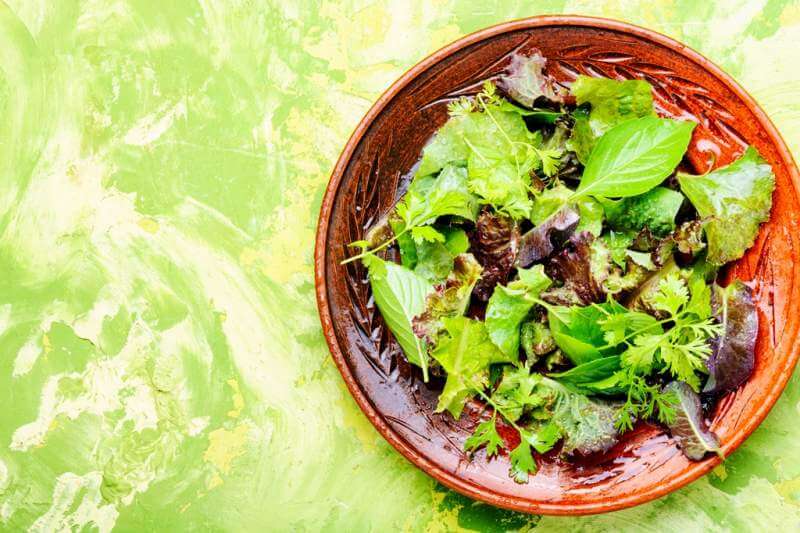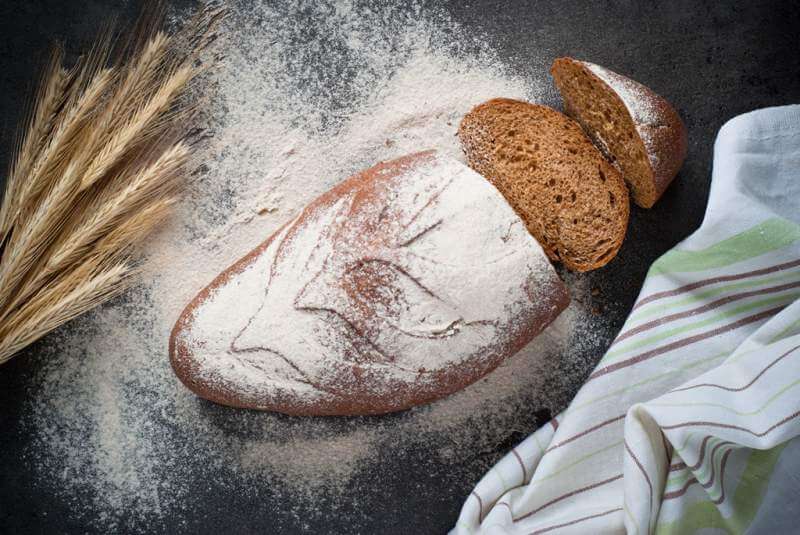Gluten-free dieting can be tough when so many foods and drinks include gluten. If you’ve been diagnosed with Celiac disease, eliminating gluten from your diet is essential to feeling good and leading a healthy lifestyle. Others choose to avoid gluten as they may have a sensitivity to it, causing uncomfortable gastrointestinal symptoms.
Though nutritionists recommend only avoiding gluten if you fall into one of these two categories, many people choose to eat gluten-free for other reasons, including increased energy levels. However, gluten contains a plethora of essential nutrients you need to keep those energy levels up and nourish your body. If you’ve gone gluten-free, follow these tips to make sure you’re getting everything you need in your daily diet.
What Is Gluten?
 A protein found in many types of wheat, grains and cereals, gluten allows certain food to hold its shape. Consumption of it can be detrimental to people with Celiac disease because it causes the body to react to gluten as if it’s a hazard material. When gluten is consumed, the body’s autoimmune system mistakenly reacts by attacking the small intestine, making it impossible to ingest essential nutrients from food.
A protein found in many types of wheat, grains and cereals, gluten allows certain food to hold its shape. Consumption of it can be detrimental to people with Celiac disease because it causes the body to react to gluten as if it’s a hazard material. When gluten is consumed, the body’s autoimmune system mistakenly reacts by attacking the small intestine, making it impossible to ingest essential nutrients from food.
Follow Gluten-Free Recipes
 Gluten can be found in a variety of different products that are part of most people’s everyday diet. When you’re first switching over to a gluten-free regimen, it can be difficult to know what to replace those gluten-laden items with. Purchasing a cookbook specifically designed for gluten-free cooking is a great way to familiarize yourself with replacement foods that are safe for consumption by those with Celiac. Because gluten and Celiac disease have gained a lot of media attention in recent years, most companies have begun producing gluten-free items, making it easier than ever to avoid the ingredient.
Gluten can be found in a variety of different products that are part of most people’s everyday diet. When you’re first switching over to a gluten-free regimen, it can be difficult to know what to replace those gluten-laden items with. Purchasing a cookbook specifically designed for gluten-free cooking is a great way to familiarize yourself with replacement foods that are safe for consumption by those with Celiac. Because gluten and Celiac disease have gained a lot of media attention in recent years, most companies have begun producing gluten-free items, making it easier than ever to avoid the ingredient.
Drink Protein Shakes as a Morning Meal
 To capitalize on your body’s potential for energy, you should try to get a lot of protein in the morning. Eating a big meal heavy with protein is a good idea, but many people find that they don’t have the time to cook a big breakfast. When eating gluten-free, you can’t just pour yourself a quick bowl of cereal in the morning either. Try finding a protein shaker that you can carry throughout the day and incorporate protein shakes in your diet. In the morning, a protein shake can provide you with a high level of protein without consuming many calories. You can also enjoy a shake later in the day to satiate hunger and maintain your energy level.
To capitalize on your body’s potential for energy, you should try to get a lot of protein in the morning. Eating a big meal heavy with protein is a good idea, but many people find that they don’t have the time to cook a big breakfast. When eating gluten-free, you can’t just pour yourself a quick bowl of cereal in the morning either. Try finding a protein shaker that you can carry throughout the day and incorporate protein shakes in your diet. In the morning, a protein shake can provide you with a high level of protein without consuming many calories. You can also enjoy a shake later in the day to satiate hunger and maintain your energy level.
Snack on Nuts Throughout the Day
 The best way to diet for your health is by eating three meals per day with small, healthy snacks in between. Those snacks can help boost your energy and ensure that you’re getting nutrients you may not normally get at breakfast, lunch or dinner. Nuts are the go-to healthy snack, especially because most nuts are completely gluten-free, making it easy to purchase them without worrying too much about the contents. Nuts tend to be high in protein as well, which is a vital source of energy for your body. Peanuts, almonds, cashews and walnuts all contain a lot of protein while other types of nuts like pistachios are a good source of fiber, another nutrient you may miss out on when gluten-free.
The best way to diet for your health is by eating three meals per day with small, healthy snacks in between. Those snacks can help boost your energy and ensure that you’re getting nutrients you may not normally get at breakfast, lunch or dinner. Nuts are the go-to healthy snack, especially because most nuts are completely gluten-free, making it easy to purchase them without worrying too much about the contents. Nuts tend to be high in protein as well, which is a vital source of energy for your body. Peanuts, almonds, cashews and walnuts all contain a lot of protein while other types of nuts like pistachios are a good source of fiber, another nutrient you may miss out on when gluten-free.
Seek Out Nutrients You’re Missing from Gluten
 Though gluten can be harmful to those with Celiac, it does contain a lot of essential vitamins and minerals that your body needs to properly function. Whether you’re going gluten-free for health reasons or just trying out a new diet, you need to be aware of what nutrients you’re missing out on and what other sources contain them. According to Very Well Health, the top nine nutrients you’re missing out on when you’re gluten-free are vitamin B6, folate (another type of B vitamin), vitamin D, calcium, iron, vitamin B12, thiamin, riboflavin and niacin. Some of these you can supplement through daily vitamins and others can be found in different gluten-free foods. Folate can be found in leafy green veggies like spinach and asparagus, while you can get more iron from red meats. Calcium is found in dairy products and vitamin D is plentiful in different types of fish.
Though gluten can be harmful to those with Celiac, it does contain a lot of essential vitamins and minerals that your body needs to properly function. Whether you’re going gluten-free for health reasons or just trying out a new diet, you need to be aware of what nutrients you’re missing out on and what other sources contain them. According to Very Well Health, the top nine nutrients you’re missing out on when you’re gluten-free are vitamin B6, folate (another type of B vitamin), vitamin D, calcium, iron, vitamin B12, thiamin, riboflavin and niacin. Some of these you can supplement through daily vitamins and others can be found in different gluten-free foods. Folate can be found in leafy green veggies like spinach and asparagus, while you can get more iron from red meats. Calcium is found in dairy products and vitamin D is plentiful in different types of fish.
Develop an Exercise Routine and Stick to It
 Regular exercise is not only great to help you stay in shape, but it actually can boost your energy levels. Even if you only spend 15 to 20 minutes exercising each day, you’ll notice a decrease in fatigue. Numerous studies have found that routine workouts can improve mood and mental health. Any type of cardio activity, like running or biking, promotes cardiovascular health. Prior to a workout, drink a protein shake to ensure that your body has enough protein and energy to power through a workout and rebuild your muscles afterwards.
Regular exercise is not only great to help you stay in shape, but it actually can boost your energy levels. Even if you only spend 15 to 20 minutes exercising each day, you’ll notice a decrease in fatigue. Numerous studies have found that routine workouts can improve mood and mental health. Any type of cardio activity, like running or biking, promotes cardiovascular health. Prior to a workout, drink a protein shake to ensure that your body has enough protein and energy to power through a workout and rebuild your muscles afterwards.
Eat Whole Grains
 Regardless of what type of diet you follow, everyone should integrate whole grains into their diet because of the abundance of nutrition they offer. When following a gluten-free diet, you can still consume some whole grains, but you’ll want to carefully research which grains do not contain gluten. Oats are an excellent whole grain source that are naturally gluten-free and provide your body with fiber and antioxidants. However, oats are often produced in places with other gluten products, so you’ll want to be careful about where the oats are sourced from. Buckwheat is another whole grain that is gluten-free and can be used in place of rice, pasta and even cereal.
Regardless of what type of diet you follow, everyone should integrate whole grains into their diet because of the abundance of nutrition they offer. When following a gluten-free diet, you can still consume some whole grains, but you’ll want to carefully research which grains do not contain gluten. Oats are an excellent whole grain source that are naturally gluten-free and provide your body with fiber and antioxidants. However, oats are often produced in places with other gluten products, so you’ll want to be careful about where the oats are sourced from. Buckwheat is another whole grain that is gluten-free and can be used in place of rice, pasta and even cereal.
Drink a Lot of Water Throughout the Day
 Water is a vital part of everyone’s daily intake, but most people actually do not consume enough water throughout the day. It’s recommended that you consume eight 8-ounce glasses per day. Make it a goal to drink at least this much water, and you’ll start to notice a feeling of fatigue fading away and higher levels of energy each morning. To help you remember to drink water throughout the day, you can use a stainless steel tumbler as a reusable water bottle that you can bring along with you anywhere.
Water is a vital part of everyone’s daily intake, but most people actually do not consume enough water throughout the day. It’s recommended that you consume eight 8-ounce glasses per day. Make it a goal to drink at least this much water, and you’ll start to notice a feeling of fatigue fading away and higher levels of energy each morning. To help you remember to drink water throughout the day, you can use a stainless steel tumbler as a reusable water bottle that you can bring along with you anywhere.
Share this post if you like it!
